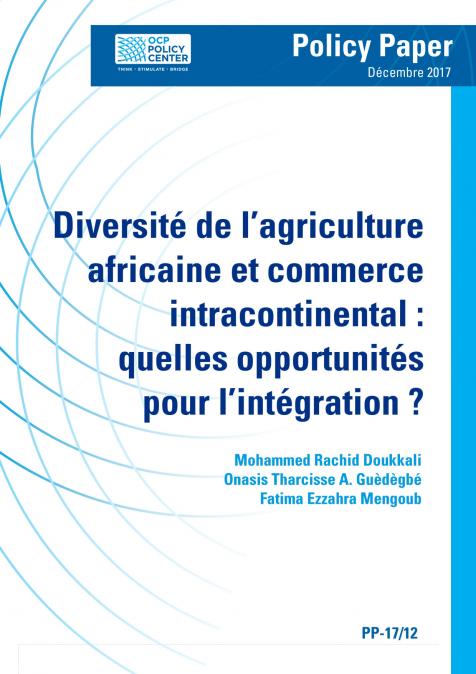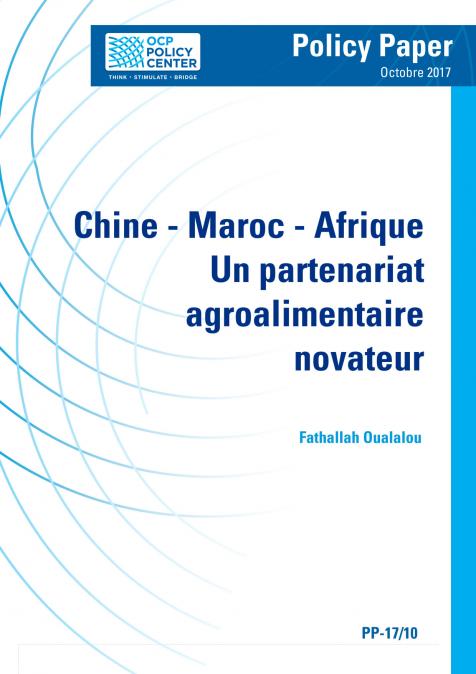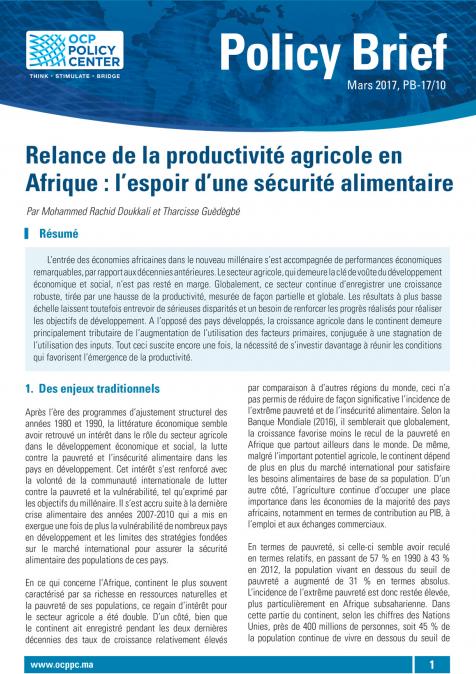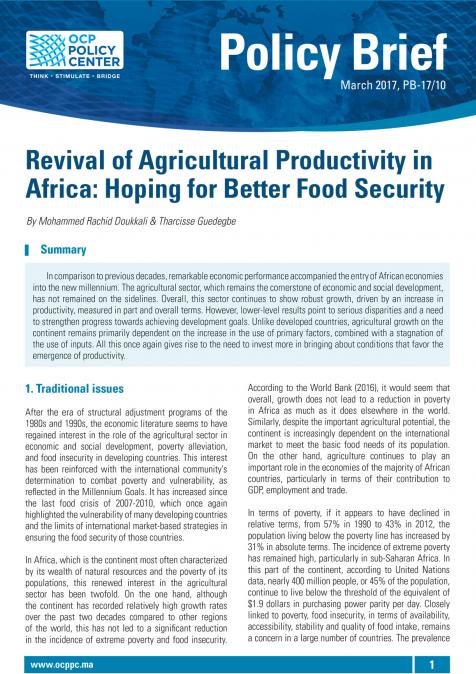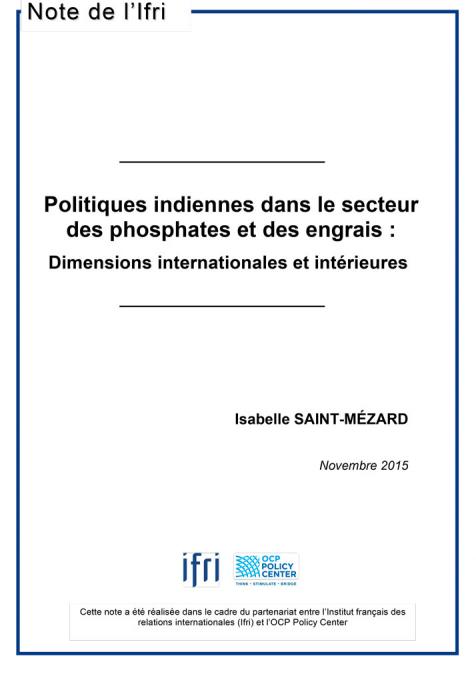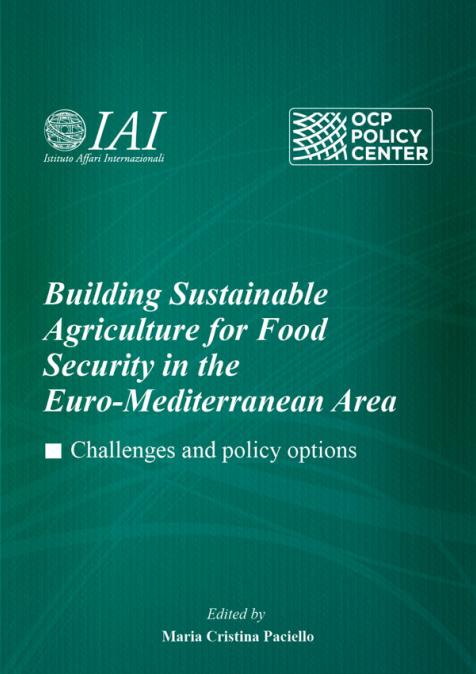Publications /
Opinion
If there is any silver lining to this COVID-19 pandemic, it is the realization of the importance of some of what we hold most dear: food security, and the foundations of hope.
Food Security:
Those of us who enjoy food security realize how much we depend on every link of the agri-food chain. For urbanites, a first sign that this chain is broken is empty shelves—supply shortages and panic buying. We suddenly appreciate the appeal of food self-sufficiency or food sovereignty: develop our own community gardens, we are told. Supply chain disruptions are everywhere. Mountains of perishable food from California to Florida are being wasted because half of the food produced during normal times goes to currently closed establishments, including restaurants, schools, stadiums, theme parks, and cruise ships. Dairy farmers are throwing out gallons of milk for lack of storage. At the same time, supermarkets are scrambling to keep their shelves stocked. In this crisis, each link in the chain has to reconfigure according to the best outlet—a demanding task given widespread uncertainty.
Millions however are food insecure. The widespread distress is clear: long lines of people wearing masks at food banks. With COVID-19, the numbers of food insecure people in the United States will increase sharply—from 4 million to 17 million—depending on the unemployment scenario. Estimates vary: 37 million people according to the USDA (2019); over 42 million receive the Supplemental Nutrition Assistance Program (SNAP); Feeding America, an NGO with a network of 200 food banks, assists over 40 million people per year; and other NGOs like Chef José Andrés World Central Kitchen.
For the millions in low and middle-income countries, who still largely depend on smallholder agriculture, this pandemic promises to inflict deeper food insecurity. The United Nations warns of global famines of “biblical proportions”. In sub-Saharan Africa, agricultural production is expected to contract by 2.6% in an optimistic scenario and by 7% in a pessimistic scenario of trade blockages, according to the World Bank Group. Since some 80% of food consumed in Asia and Africa is supplied by food supply chains (FSCs), disruptions along these chains will inevitably undermine both supply and demand. These FSCs are dominated by thousands of labor-intensive small and medium enterprises (SMEs)—some 50-80% of the food economies in developing Asia and Africa, according to IFPRI. Dense crowds typically gather at food wholesale and wet markets. Governments have little control over the public hygiene conditions in these areas. Lockdowns will dry up business, increase the risk of high prices (for example, in Addis Ababa, prices of key staples rose by 50-100% between February and March 2020) and promote panic buying. Smallholders will suffer directly as their input supply chains are disrupted; and indirectly as the demand for their output dwindles. The problems do not stop there. Another calamity from nature has struck: hordes of locusts have been swarming across East Africa, the worst seen in 25 years, a calamity related to repeated cyclones, themselves due to climate change. For food importing countries, the disruption of supply chains undermine deliveries, while prices of the same food commodities collapse as the fear of a worldwide recession looms, and sellers are unable to reach their markets. At the same time, some food exporting countries are restricting exports to keep their domestic prices low, as happened during the 2007-08 global food crisis. By April 20, 2020, 16 countries had issued export-restriction orders (Atlantic Council, April 2020).
The Foundations of Hope
It is clear that our highly integrated and technologically sophisticated world is in disarray. How did we get here? How do we get out?
Pandemics are not new. The 1918-19 Spanish flu pandemic ravaged societies, infecting 500 million people, and killing an estimated 50 million globally. One of our strengths, a highly inter-connected world which allows for more efficient division of labor through trade, is now a major vulnerability because it has enabled COVID-19 to circle the globe in a short time. The trauma of pandemics can change the course of history. What changes will this pandemic bring? The experiences of a few Asian countries show that widespread socio-economic dislocation is not inevitable even during a pandemic.
Countries and territories including South Korea, Hong Kong SAR, Taiwan, and Singapore—close to Wuhan, China, the epicenter of COVID-19[1]—took swift and decisive measures to identify and contain the infection. These included contact tracing, widespread testing, and the creation of a unified big-data[2] platform to analyze possible cases of infected persons and track cases for containment and treatment. All four three countries skillfully leveraged their ICT capabilities to identify, contact trace, test, contain, and treat. Following the disastrous SARS outbreak of 2002, Taiwan has developed a disaster management and recovery center, the National Health Command Center. The countries have the institutions, the ICT tools, personnel, and governance structures that enable them to mobilize their citizens to spring into action without violating privacy rights. Citizens in Hong Kong and South Korea acted pro-actively and protected themselves even without a government-imposed lockdown. The governments and their people were prepared, acted as one, and were vigilant[3].
Their responses show that the foundations of hope lie in preparedness, decisive action, public collaboration, and social cohesion. These governments show that it is not necessary to be authoritarian to mobilize science, technology, and the people’s support to respond effectively to a pandemic. What is necessary however is national leadership committed to building institutions and policies, in partnership with and for the people. President Lincoln said it best: the best way to predict the future is to create it.[4] Emerging leaders, the world needs you.
[1] There is still an information war between the United States and China on the origin of COVID-19. Hopefully, further research will identify the truth.
[2] Data from immigration, customs, and national insurance was combined.
[3] See Fast Company, Ariane Cohen, April 24, 2020, ‘Former World Bank president, Jim Yong Kim has a 5-point plan to defeat COVID 19.’ These five points are: 1. social distancing; 2. testing; 3. tracing the contacts of those who have tested positive; 4. isolating those who have been in contact with positive patients and quarantining those who may have been affected; and 5. treatment. All must be deployed simultaneously and aggressively. Kim points out that this is exactly what South Korea, Taiwan, and Singapore have done (accessed April 26, 2020).
[4] This quote is credited to President Abraham Lincoln (March 4, 1861-April 15, 1865) and to Peter F Drucker, management consultant, educator and author, (Nov 19, 1909-Nov 11, 2005).


